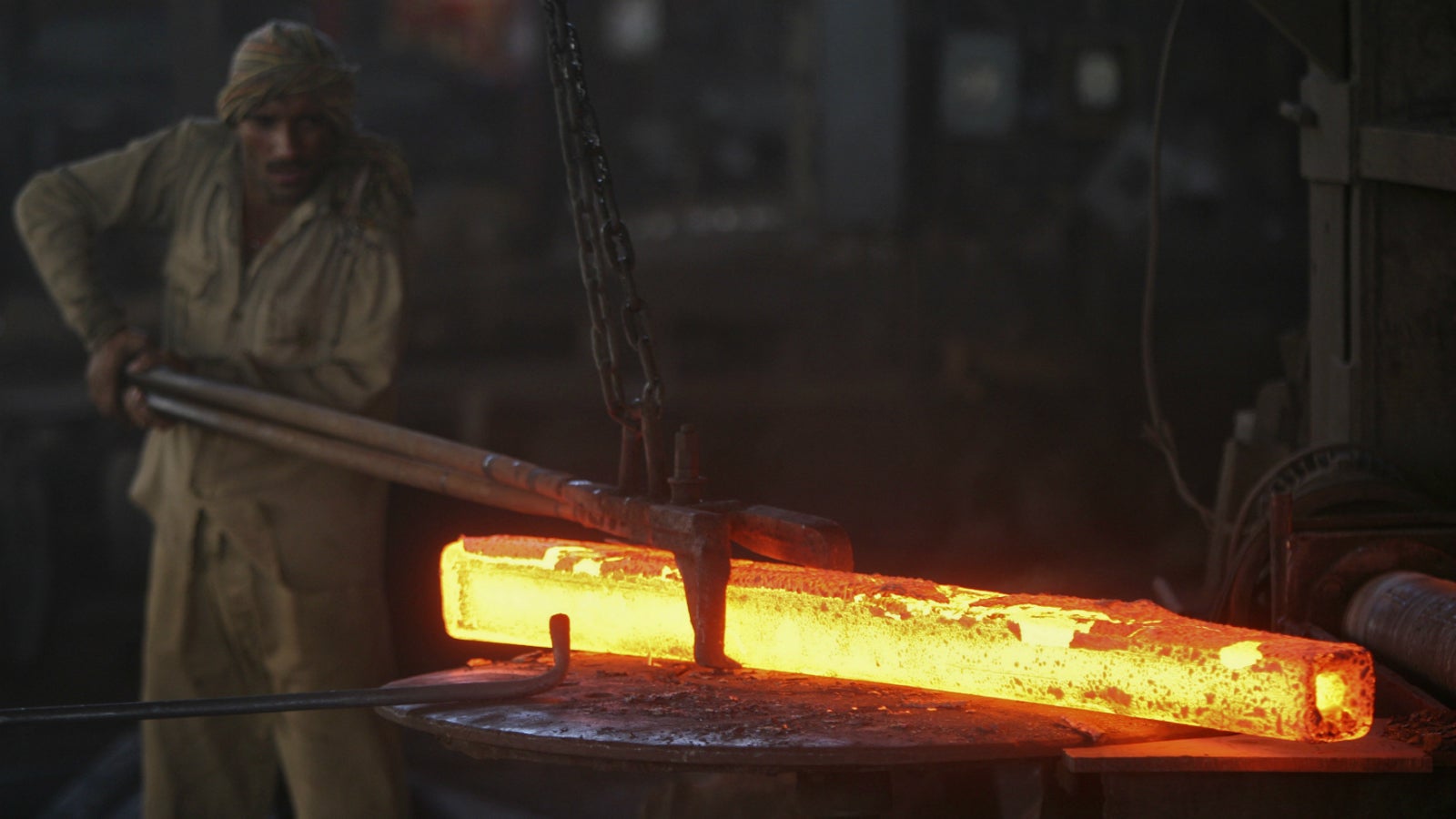Don’t celebrate just yet: India’s economy is still far away from a full recovery
India’s GDP expanded at 7.4% in the second quarter of the current financial year. With these growth figures, Asia’s third largest economy not only exceeded expectations—analysts polled by Reuters had pegged the GDP growth at 7.3% for the quarter—but has also outpaced China (6.9%).


India’s GDP expanded at 7.4% in the second quarter of the current financial year. With these growth figures, Asia’s third largest economy not only exceeded expectations—analysts polled by Reuters had pegged the GDP growth at 7.3% for the quarter—but has also outpaced China (6.9%).
Improved domestic demand and manufacturing activity boosted growth in the quarter that ended on Sept. 30. But while the GDP numbers are robust, the economy isn’t exactly firing at all cylinders, and analysts are worried about weak rural demand and a slowdown in the construction sector.
Here is how some of the leading economists in India decoded these new GDP numbers.
“We are still below our potential growth”
Abheek Barua, chief economist at HDFC Bank
The headline numbers are in line with our expectation. But we are still grappling with viewing these healthy numbers in the current context. The global economy is still not doing any better and we are still below our potential growth.
The government on its part is doing well, but the problem is a lot of policy measures do take time to reflect. So in a way, input is happening, but output will still take time to reflect, such as in the case of the roads and power sectors.
The private sector has also been constrained by over-capacity in recent years, so we can hopefully see the country achieving its full potential by next year.
“The GDP growth is not very exciting but is cheerful”
Pravakar Sahoo, associate professor, Institute of Economic Growth at Delhi University
I think 7.4% in Q2 is a good number given that the export growth for the last 12 months has been almost zero. Exports constitute around one quarter of the GDP, and until last year, the export growth was about 12%. So you were getting one-sixth of your GDP growth from exports only. Now, with a nearly zero export growth for the last 12 months at a stretch, that gap needs to be compensated by domestic demand. So we should be happy. In sectors like automobiles and electronics, you see a lot of consumer-led demand.
Even with agriculture, the 2.2% growth is good because the last two years have seen bad and erratic monsoons. Overall, the GDP growth is not very exciting but is cheerful.
“The corporate sector is in a poor shape”
Devendra Kumar Pant, chief economist and senior director at India Ratings and Research
We are seeing robust growth in some of the sectors like manufacturing and finance, but sectors like construction and defence are yet to pick up.
But, do not expect investments and growth to pick up immediately. It will be gradual. The corporate sector is in a poor shape and the sectors that have growth potential are struggling. For instance, look at infrastructure sector: companies are in a bad shape and banks that can fund them are clearing their books.
As for the government, it can’t push up investment recovery since it has a fiscal situation to control. So, we are expecting the economy to return to full scale in the next year or in a year and half. Corporate recovery should also happen by then. If you look at the consumer durable sector this quarter, much of the production took place during the festive season and if that doesn’t sell, then production will be hit again.
We think the economy will grow at 7.5% during the 2016 fiscal. To grow at a faster pace, the government can remove bottlenecks and build capacity.
“The construction sector still remains a worry”
Saugata Bhattacharya, chief economist at Axis Bank
The growth in manufacturing is coming from a lot of mid-sized companies in the capital goods space—spare part makers, construction equipment manufacturers, or tower makers, among others. These companies are getting new orders from government contracts in the power or construction sector.
The construction sector still remains a worry, because that is where jobs are likely to be created. But the sector could soon see improvement with railway and roads construction orders from the government. Additionally, the overall rural demand is still weak because of deficient monsoon. The government has also not made any significant increase in the rural outlay.
“Reaching 8% is very difficult”
Madan Sabnavis, chief economist at CARE Ratings
We can sustain the current growth. The only factors that can affect it are agriculture and a slowdown in manufacturing. But reaching 8% (government’s target for 2016 fiscal) is very difficult and looks unlikely. The agriculture sector might take a hit due to weak monsoon and the government itself may not be able to propel growth any longer. That is because as we come to the fourth quarter, there could be expenditure cuts by the government to maintain the fiscal deficit target.